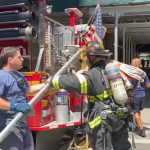In this study out of UCSF, patients were surveyed as to see if they would prefer treatment with fibrinolytic (TPA) therapy in the event of a stroke.
Adults over 50 years of age read a scenario where they suffered a stroke and were brought to the emergency department by paramedics. The risks and benefits of TPA therapy were presented to the participants.
The total sample size (n) was 545 with 76.2% indicating they would want TPA.
This has implications for creating implied consent for situations where a patient is unable to provide consent for TPA and no family members or surrogates are available. The paper states, “When an incapacitated older patient’s treatment preferences are unknown and surrogate decision makers are unavailable, there are equally strong empirical grounds for presuming individual consent to thrombolysis for stroke as for presuming individual consent to CPR. Because the presumption of consent is generally accepted for CPR, this finding provides empirical support for policy positions recently taken by professional societies that favor the use of thrombolysis for stroke in emergency circumstances under a presumption of consent.â€
Interestingly, the study also used similar methods to examine if patients would want CPR for an out-of-hospital cardiac arrest. 75.9% said yes. The authors compare the finding of CPR to that of TPA as justification for TPA potentially falling under the doctrine of implied consent.










1 Comment
What were the risks and benefits described?